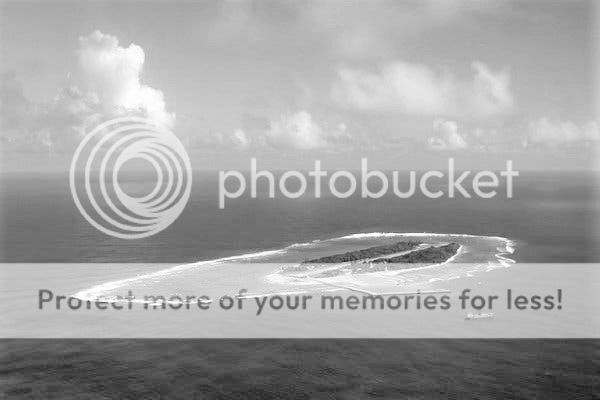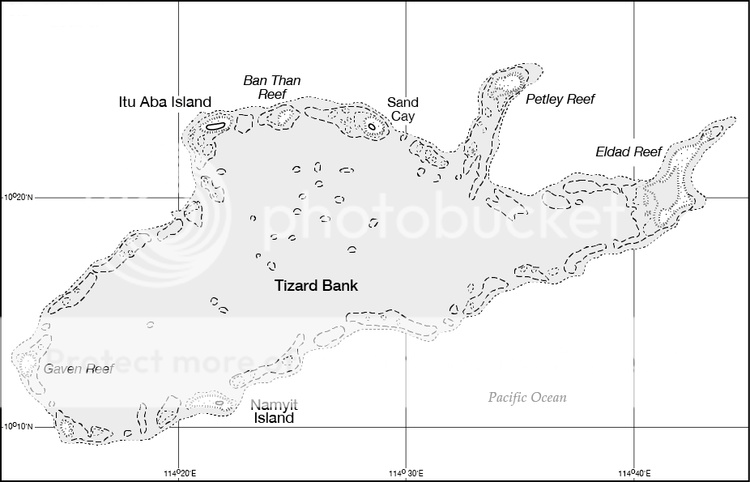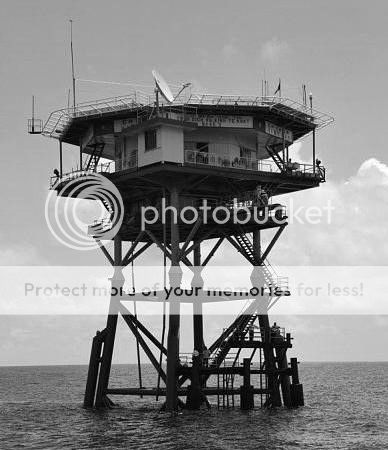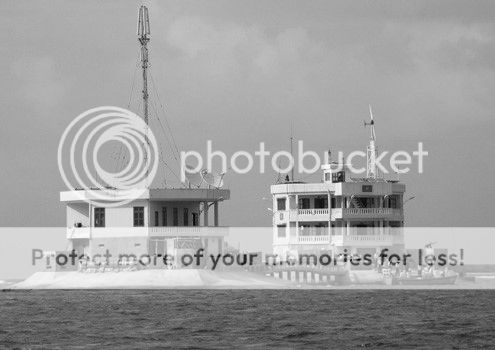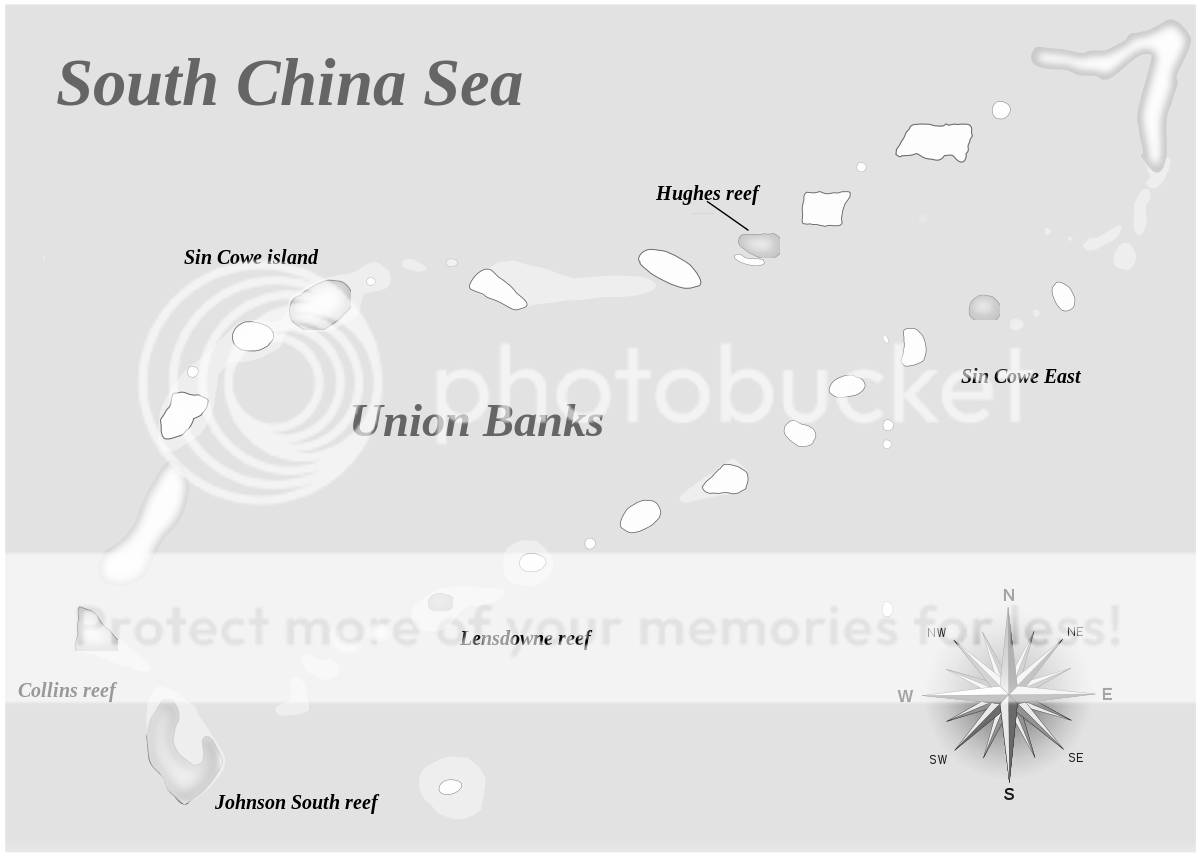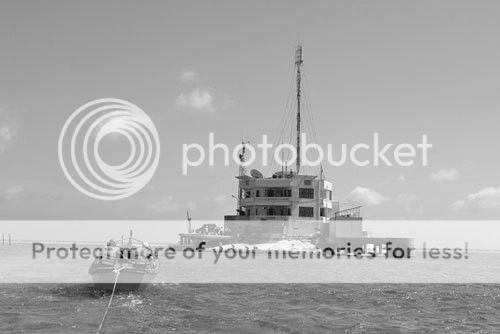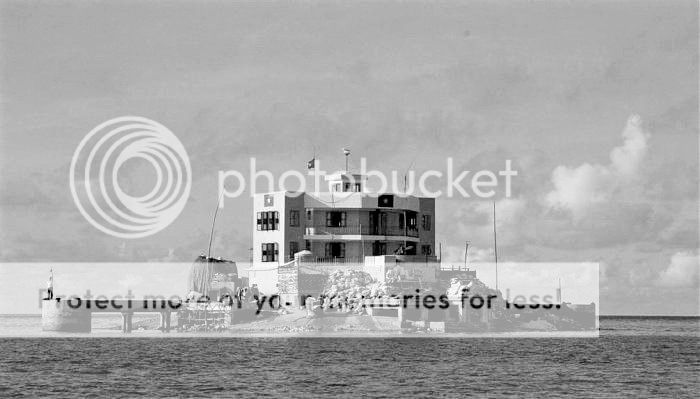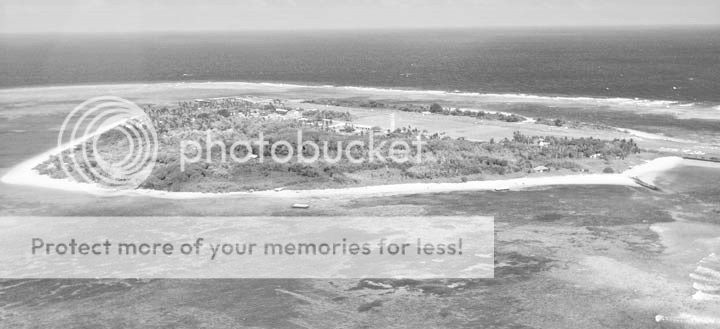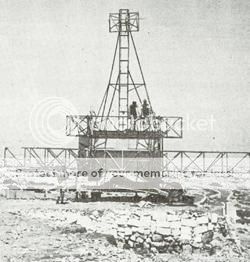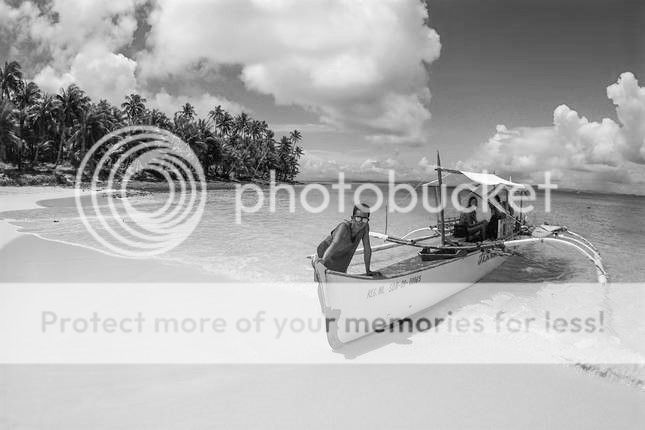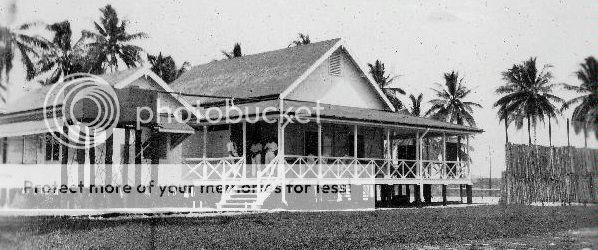Itu Aba Island, Thursday, 23 June 1949
Breakfast was served early in the mess hall; for the visiting officers it would be a long day, and the cooks made every effort to fortify them.
“The Navy’s response ship
Cabo Bojeador will serve as your transportation today,” Ver explained. “And while she is quite seaworthy, navigating the shoals and the reefs will take much of your time. But I believe you will find the tour illuminating”
The
Cabo Bojeador awaited them at the island’s pier, and once the inspection party were aboard her commander shoved off and carefully headed her out to sea through the marked channel. Once clear of the reef she headed eastward towards their first point of interest.
The spindly platform that marked the position of Sand Cay stood high above the waters the South China Sea – only at low tide would the reef itself and its surrounding sands be visible. The
Cabo Bojeador anchored some distance away and launched a small boat that ferried them to the platform. Commander Salazar secured the boat and led the way up the stairway that led to the platform above.
“I asked for this, didn’t I?” thought Stevens, concentrating on his footing.
But they made their way to the top without serious incident, and met briefly with the four men assigned to the station. A navigation beacon warned shipping of proximity to the shoals and provided a point of reference. Couturier smiled approvingly at the compact DME equipment of French manufacture that monitored shipping in the area, as well as the radio mast that maintained communications with the outside world. The crew, composed of two troopers of the Constabulary and two civilian specialists, spent four days on the station before being relieved by a similar quartet, brought out from Itu Aba by a supply boat.
Their stay aboard Sand Cay Station was brief, as the
Cabo Bojeador needed far more time to reach their next destination, Namyit Island, known as Binago on Philippine charts. They stood out to sea to safely round Petley Reef, where they could see a crew busily at work expanding the pillars of what Ver explained would be a lighthouse; for now, it was merely an automated beacon and temporary refuge for workmen.
Passing the far end of Tizard Bank they saw the buoy markers that warned ships approaching Eldad Reef. Buis noted that there was no evidence of RDF in this extremity of the network; no doubt it was a gap his hosts would try to close as soon as possible.
Namyit Island boasted a small regular garrison of Constabulary troopers under a subaltern, together with what they had become to accept as a normal complement of civilian specialists. Conditions permitted them to visit the station that stood on the foreshore – one hut for monitoring equipment, one house in which the crew lived on a permanent basis, and, they could see, the beginnings of a far larger and even more permanent building.
“Binago is large enough to warrant a regular lighthouse” Ver explained. “We hope to have it finished by next year, if the typhoon season does not cause us too many problems.”
Leaving Namyit Island, they continued westward towards the Gaven Reefs, which came into sight about an hour later. Here it was plain to see what their hosts meant by a regular lighthouse – a small artificial island upon which stood not only a lighthouse but a monitoring station with its tall RDF mast – all constructed of concrete. Here the
Cabo Bojeador could tie up to permit inspection party to visit the station, where they were able to observe the current plot of shipping – chiefly fishing vessels – in the neighborhood.
By the time they returned to Itu Aba the sun was slowly setting in the west, and that evening Buis, Stevens, and Couturier had interesting discussions with their hosts, and among themselves.

